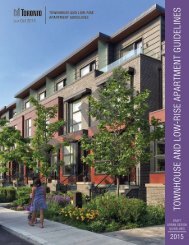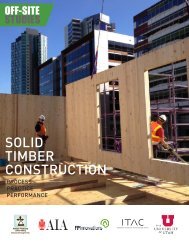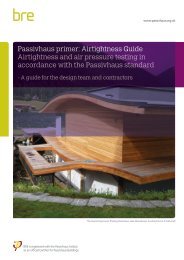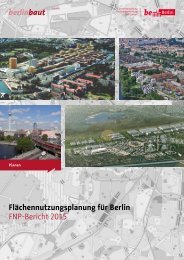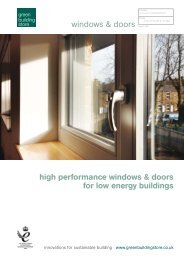TRUE URBAN SPIRIT
b008379b
b008379b
Create successful ePaper yourself
Turn your PDF publications into a flip-book with our unique Google optimized e-Paper software.
4 VIENNA: NETWORKING THE CITY<br />
INTEGRATION AND NETWORKING<br />
OF ECO-FRIENDLY MEANS OF TRANSPORT<br />
User-friendly possibilities to combine public transport,<br />
cycling and walking facilitate independence of motorised<br />
individual traffic. One very important factor is<br />
the option of switching comfortably between different<br />
modes. Incentives are formulated to support the caseby-case<br />
multimodal choice of means of transport.<br />
In the interests of customers, the eco-friendly transport<br />
system is optimised as one homogeneous whole.<br />
This includes the systematic upgrading of public transport<br />
stops into multimodal nodes (including parkand-ride<br />
facilities, bike garages, City Bike terminals,<br />
e-mobility and car sharing services) as well as the<br />
targeted use of information and communication technologies<br />
or the development of integrated services that<br />
support multimodality (e. g. mobility card, multimodal<br />
information systems, smart ticketing). In keeping with<br />
the motto “from car ownership to car use”, special<br />
attention is paid to qualitative and quantitative improvements<br />
of car sharing services to enable the maximum<br />
possible number of inhabitants to use a car without<br />
actually owning one.<br />
Based on the project “Public Transport Stops of the<br />
Future”, a package of measures for multimodal public transport<br />
nodes is being implemented to further facilitate switching<br />
between transport modes.<br />
Introduction of a “Vienna Mobility Card” that combines<br />
public transport tickets with access to City Bikes, car sharing<br />
and other mobility services.<br />
Upgrading of car and bike sharing services in Vienna by<br />
means of active co-operation of the City of Vienna and Wiener<br />
Linien with potential operators, in particular with respect<br />
to marketing and the setting-up of service points in public<br />
space. The City Bike system will be improved by means<br />
of additional locations, easier accessibility, new bikes and<br />
expansion to new urban quarters.<br />
WALKING AND CYCLING – STRONG PARTNERS<br />
FOR ECO-FRIENDLY <strong>URBAN</strong> TRANSPORT<br />
The city of short distances is a city that renders walking<br />
and cycling attractive and creates optimised conditions<br />
for a combination with public transport. Urban<br />
quarters are thus designed to ensure that all inhabitants<br />
and in particular children, older persons and<br />
persons with special needs will be able to move and<br />
navigate independently and safely through the neighbourhood.<br />
A good concrete example is provided by<br />
the findings of the project “Gender Mainstreaming<br />
Pilot District Mariahilf”. Moreover, safe and tightly knit<br />
cycleway networks will widen non-motorised mobility<br />
options.<br />
Development and implementation of a tightly knit network<br />
of Viennese walking routes in close co-operation with<br />
the municipal districts. This walking route network allows<br />
for safe and pleasant walking, e. g. due to attractive seating,<br />
plants and shade-givers or pedestrian-friendly traffic-light<br />
phasing, and is in particular networked with Underground<br />
stations and prime shopping streets. (> 4.2 Vienna revives –<br />
open space: green & urban – Flagship Initative: Vienna‘s open<br />
space network)<br />
Upgrading of important streets of supra-local importance<br />
into pleasant boulevards for walking to render the qualities<br />
of urban spaces more palpable.<br />
Planning, development and implementation of high-level,<br />
long-distance urban cycleways – also across city limits –<br />
with even better infrastructure.<br />
Evolution of Vienna’s cycleway network to improve capacities<br />
and meet different user demands (e. g. by means of bike<br />
boxes for cyclists at traffic lights/crossings, increased installation<br />
of bike garages, wider cycleways/cycle lanes, taking<br />
account of differentiated speeds).<br />
108



